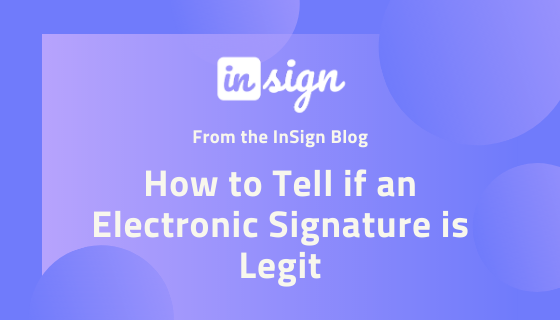eSignatures form a huge part of your electronic procedures and records. They are not badges or marks that make your documents look formal. They are legally accepted badges that carry the same sort of responsibility that wet signatures do. However, after so many years, there is still mistrust of electronic signatures even though they contain more evidence that a certain individual signed a document at a specific time than a traditional wet ink contract does. So, how can you tell if an electronic signature is legit? How can you be sure that your e-signed document will hold up in court? While it’s not easy to identify the authenticity of eSignatures on your own, there are many online signing platforms that can help you accomplish the task.
Here are some key requirements for an eSignature to be recognized as legit:
Signer Authentication
In order to prove the authenticity of a signed document in court, you will need to prove the identity of the signer. Different eSignature softwares provide different ways to prove signer identity. Text message authentication is a common choice for many industries as it proves the signer’s identity in a convenient and easy way.
Intent to Sign
eSignatures are only valid if each party intends to sign. You want to be able to prove that all parties involved knew that they were signing a legally binding document. Furthermore, all parties involved must consent to do business electronically. The eSignature software must also be compliant with all the consent requirements for electronic document delivery as well as approval and review of necessary disclosures.
Software Compliance
Another way to determine the authenticity of the electronic signature is to make sure that the signing solution complies with the relevant regulations. Popular document management and eSignature systems comply with eIDAS, UETA, and ESIGN.
Tamper Evidence
Has the document been altered in any way? eSignature services provide a feature called “tamper evidence”. These tools can offer evidence that tampering took place in case someone tries to alter any part of the document (even something as simple as capitalizing a word or deleting a space).
Can I Prove All of These Things?
Most popular eSignature softwares come with a feature known as an audit trail. It is a detailed log of all activities performed on a document. These tools timestamp each signature and monitor all aspects of the electronic signing process. You should be able to get the following details:
- Identity of the signer
- The accurate time of signing
- The authenticity of the document
- The validity of the signing process
- The validity of the digital certificate
Apart from these, the electronic signature vendor can also provide consistent evidence across all audit trails and signed documents, which means less risk for you and your clients in case your documents are challenged in court.
Summary
In conclusion, eSignatures are binding. But that’s not the issue. Whether or not a particular signature can be authenticated is the real problem. Using a reliable electronic signature company such as InSign is one way to ensure the authentication process. If your company uses an internal signature system, then it is recommended that you adopt procedures to make sure that all the requirements of the Acts are met and that there is enough evidence supporting the authentication process of your company.

